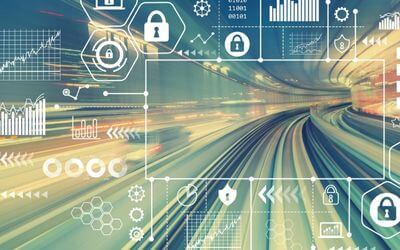When it comes to transportation, the train represents a symbol of pride for many European countries, reflecting the progress of industrial development and the engine of passenger mobility.
As an example, the EU demand for passenger transport increased by around 10% between 2015 and 2019, when it would register a peak of 414 billion passenger-kilometers (pkm) only to be interrupted due to the strict precautionary measures introduced during the Covid-19 pandemic and subsequently recovering the previous levels reached.
Despite these promising figures, the modernization of the railway sector in a volatile geopolitical, economic, and social environment presents several issues where the best solution is for transport operators to move towards digitalization.
Digitalization in railway projects
We will begin by describing the value chain: infrastructure operators and transport operators, train manufacturers, technology suppliers, highlighting traffic control and signaling systems, passenger information systems (PIS), ticketing, and communications providers. Engineering, maintenance, integration, consulting and certification. The breakdown of a railway project is very broad, and the chain’s components will vary depending on the project’s complexity.
All these actors in the rail transport domain share a common denominator, that of digitalization in their processes. On the one hand, infrastructure and transport operators are trying to change their business model by applying high-impact technologies such as IoT, Big data and Analytics, and Artificial Intelligence (AI). An example of this can be to speed up changes in IT/OT convergence models, generating digital transformation plans and programs – which for an infrastructure operator can mean progressing from task and physical asset management to digital asset management. This is important for ensuring high operational fidelity and minimizing security breaches. Another example is digital solutions for image processing using advanced analytics. Here the focus is on advanced communications, ranging from fully interconnected PIS systems and centrally monitored video-surveillance cameras to passenger service networks like Wi-Fi.
On the other hand, train manufacturers and technology suppliers are designing their state-of-the-art solutions with the new needs of operators in mind – being aligned gives them a competitive advantage when dealing with long railway projects in which milestone planning (in delivery times) and a clear commitment to technology development several years ahead are the order of the day. It is no coincidence, then, that a large part of the global rail market is controlled by world-class European companies of the likes of Alstom-Bombardier, Hitachi Rail STS, Siemens, Thales, and so forth – thus giving you a solid indication of how mature and reliable European solutions and products are.
Close to all of them and serving a consolidating function, are the railway associations, which are joining efforts to promote technological trends like cybersecurity, digital transformation, process automation and connectivity. At the same time, members interact to identify working groups and project synergies. Regarding the certification bodies, they help to improve IT system interoperability among public transport operators by specifying open interface architecture standards for on-board systems. Both play an important role in identifying emerging technologies that benefit members, fostering R&D working groups and developing technologies to be incorporated by end customers.
Railway sector players are already implementing strategies to enable them to prepare for the digital future – not only to optimize operations and improve the passenger experience, but also so they can compete in general in the transport industry and face competition from smart mobility platforms.
Finally, it is important to mention the global promotion venue of this value chain, INNOTRANS, a biannual international trade fair in Berlin. The number of participants and rigorous registration process make it the world’s largest platform for railway infrastructure, technology, and equipment. On a smaller but still relevant scale, the Rail Live railway congress in Madrid attracts more and more international visitors each year.
Conclusion
Teldat’s development of its IOT Rail business unit is being constantly innovated with new technologies developed by R&D and Production to launch train-to-ground connectivity platforms that enable it to compete at an international level and establish the brand in forums and congresses as a European leader for network virtualization, network traffic analysis, cybersecurity and 5G.
Source & other points.



























